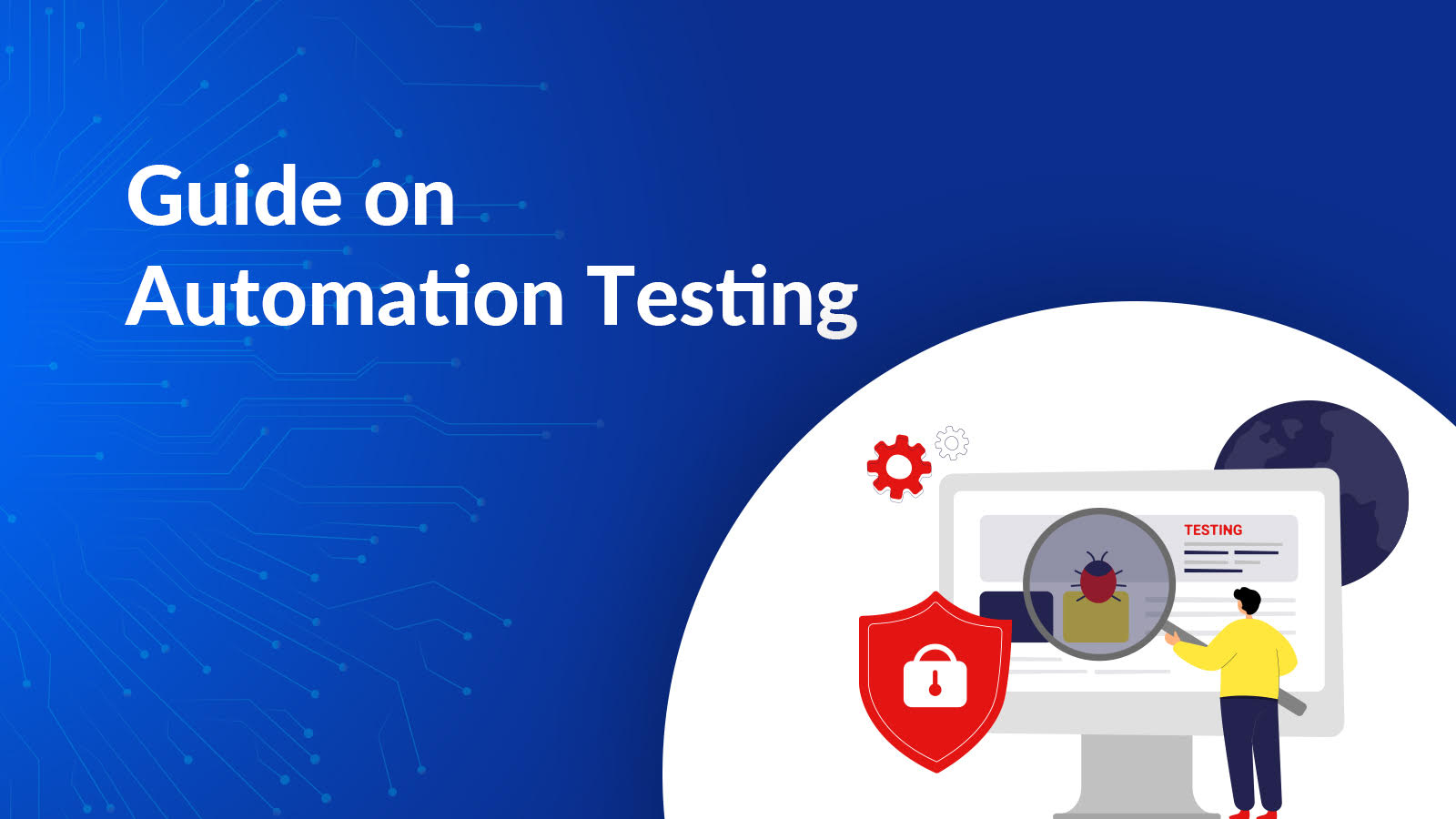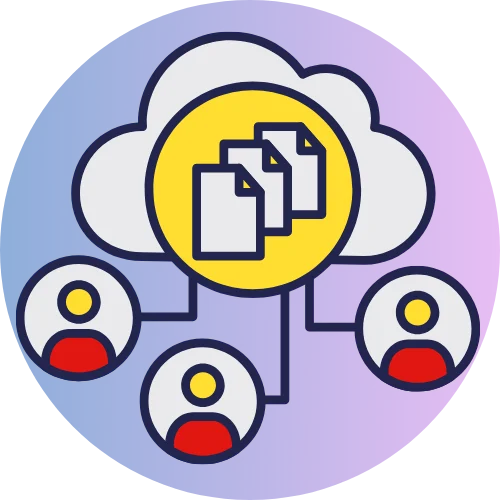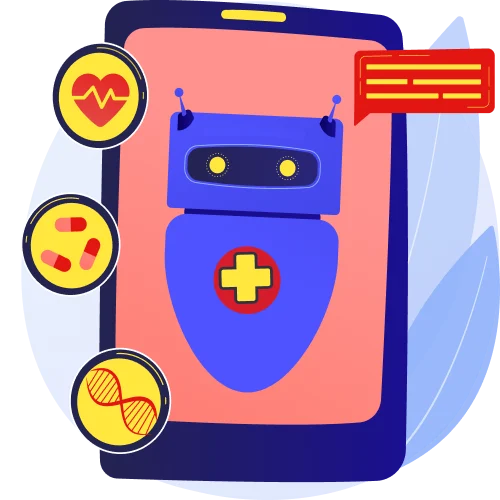The testing process in software development is aimed at determining whether the final product meets the expected specifications and is defect-free. Either manual or automated testing is performed as part of the development process (waterfall testing approach) or, ideally, continuously (agile testing approach).
In addition, proactive and continuous software testing saves time and money by identifying and fixing bugs early in the development process, preventing them from becoming “baked in.” The process also speeds time-to-market, which, with changing market pressures and customer demands, is very important, and ensures the product avoids security issues.
For continuous software testing to be most effective and to speed up time-to-market, developers must take advantage of automation wherever possible. Discover what automated testing is and why it is used, when to automate tests (what kinds of tests to automate), how to choose the best automated testing tools, and the best practices for automated testing in this guide.
What is Automation Testing?
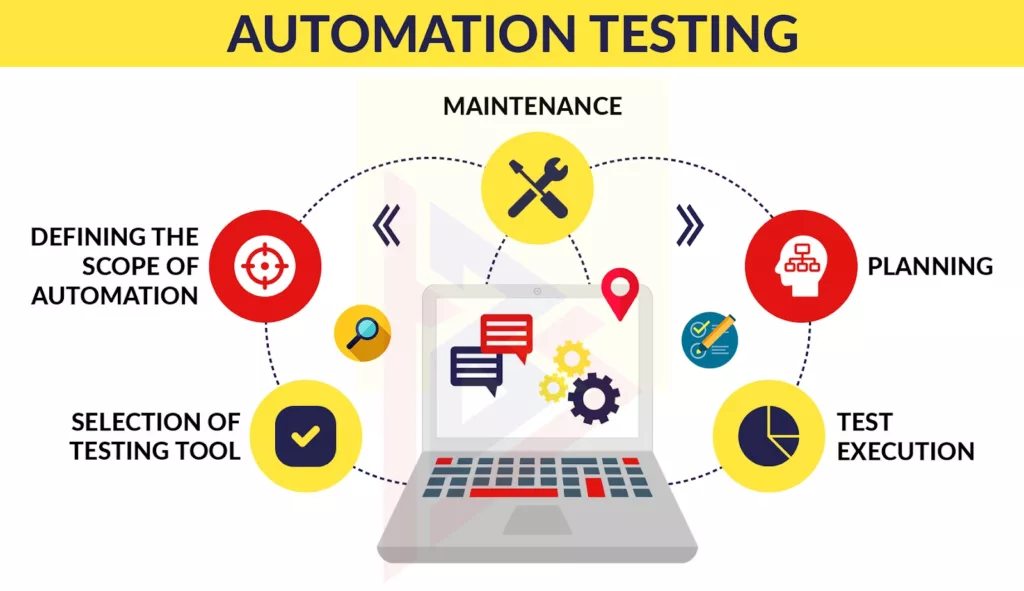
In automation testing (also called automated software testing or test automation), independent software tools are used to execute tests and compare actual results to predictions. Automating testing improves quality, reduces costs, and increases efficiency.
Software development has relied on automation testing for years, but the proliferation of open-source and low-cost tools has made it more accessible for a wider range of organizations and projects in the last few years.
Learn about the difference between .NET Core and .NET Framework here
When to automate?
A repeatable test would be a good candidate for automation testing if automating it would save time or improve the quality of the app.
The Difference Between Automation Testing & Manual Testing
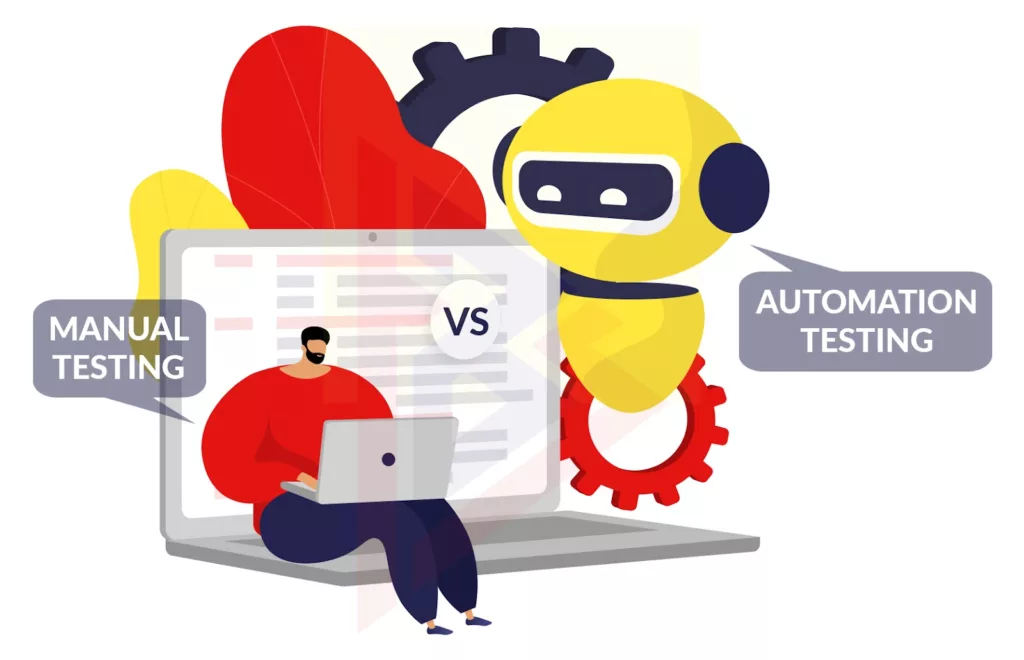
Test engineers or developers perform manual software testing by checking on the software’s features, uses, and functionality against test cases without the aid of available tools and software. With increasingly complex software, manual testing is time-consuming, subject to human error, and difficult to scale.
Developers automate and control test cases using specialized tools to automate and control the execution of test cases, with test cases being executed automatically without any human interaction after they are prepared. For large or complex software, automated testing is ideal if it requires continuous or repeated testing of pre-written scripts. The ability to run automated tests simultaneously across multiple components or platforms lends itself well to Agile development and its emphasis on iterative and continuous testing to find and fix bugs before they become critical, thus speeding up development.
Though automation testing may appear to be only a replacement of manual testing with automation tools, there are several key differences between manual testing and automation testing, including:
- Automated testing allows you to run more tests at the same time
- Testing by automation can expand the scope and depth of testing
- It is possible to scale automation testing without additional work
- Human errors are common in manual testing – automated testing is not
- Any size simulated user group can be utilized for automation testing
- Automated testing can be initiated whenever source code changes, reducing developers’ efforts
- The automation of repetitive tasks eliminates burnout
- AI (artificial intelligence) will increasingly play a role in test automation
Manual and automated testing are typically used to develop software, depending on the use case. Automation is not appropriate for tests that are run only once or twice. Every stage of the development process can be tested in any way desired by the assurance and testing team.
Learn about the Why ASP.Net is best for Microservices.
Types of Automation Testing
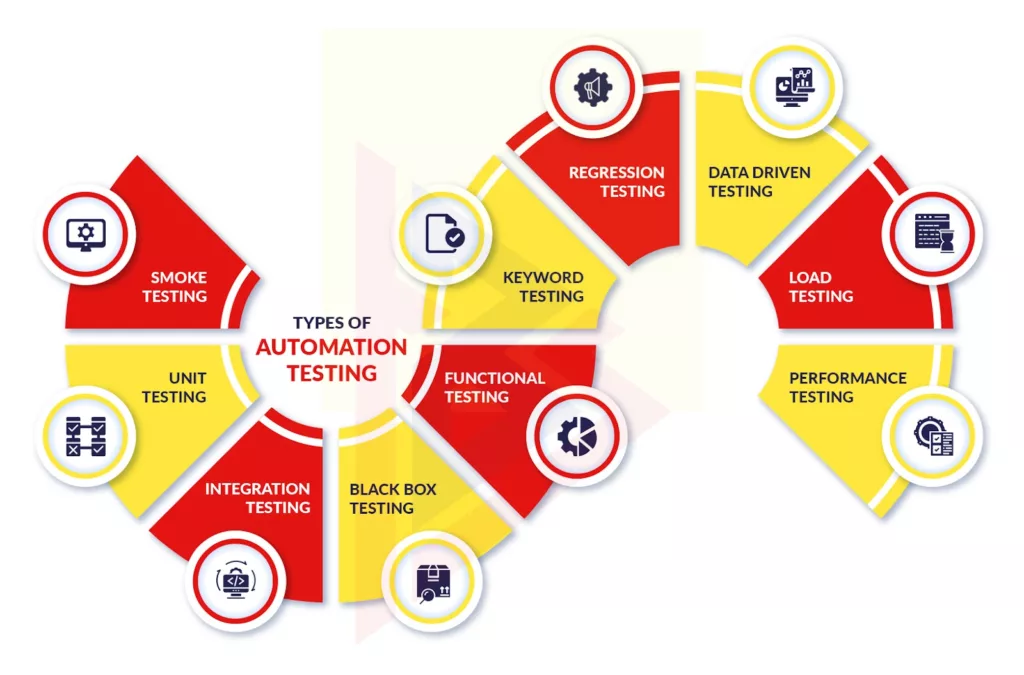
There are some types of software testing that are not best suited to automation testing. The best types of automated tests are:
1. Smoke Testing
Smoke Testing is the first step in identifying the problems that could hinder the functionality of the software.
2. Unit Testing
Using a unit test, you can identify problems in one module of code. Unit testing in Agile development identifies the bugs of user stories developed in time-boxed sprint cycles.
3. Integration Testing
A software integration test checks the wholeness of a system, i.e. when two or more modules have been combined.
4. Black Box Testing
During black box testing, specific aspects of the software are assessed without accessing its inner workings.
5. Functional Testing
This type of black-box testing looks at the most critical parts of software and is part of the quality assurance process.
6. Keyword Testing
In keyword testing (keyword-driven testing, action word-based testing), familiar action words are used to model user behavior (design of the test), which is separated from the implementation (development) and execution of the test.

7. Regression Testing
Regression testing runs the test cases during major software changes in order to ensure the software is still functioning as expected.
8. Data Driven Testing
The data-driven testing approach (table-driven testing or parameterized testing) stores test data in a table and executes all test data with a single script, displaying the results in the same table.
9. Load Testing
When there is an increase in the number of users or traffic spikes, a load test helps determine how well software performs under stress conditions.
10. Performance Testing
The performance of a software product is evaluated in terms of speed, responsiveness, intuitiveness, and stability. At the end of each sprint, performance testing can be checked. Tests can be conducted quickly and fragments of the product can be delivered in a timely manner.
Top 10 Automation Testing Tools
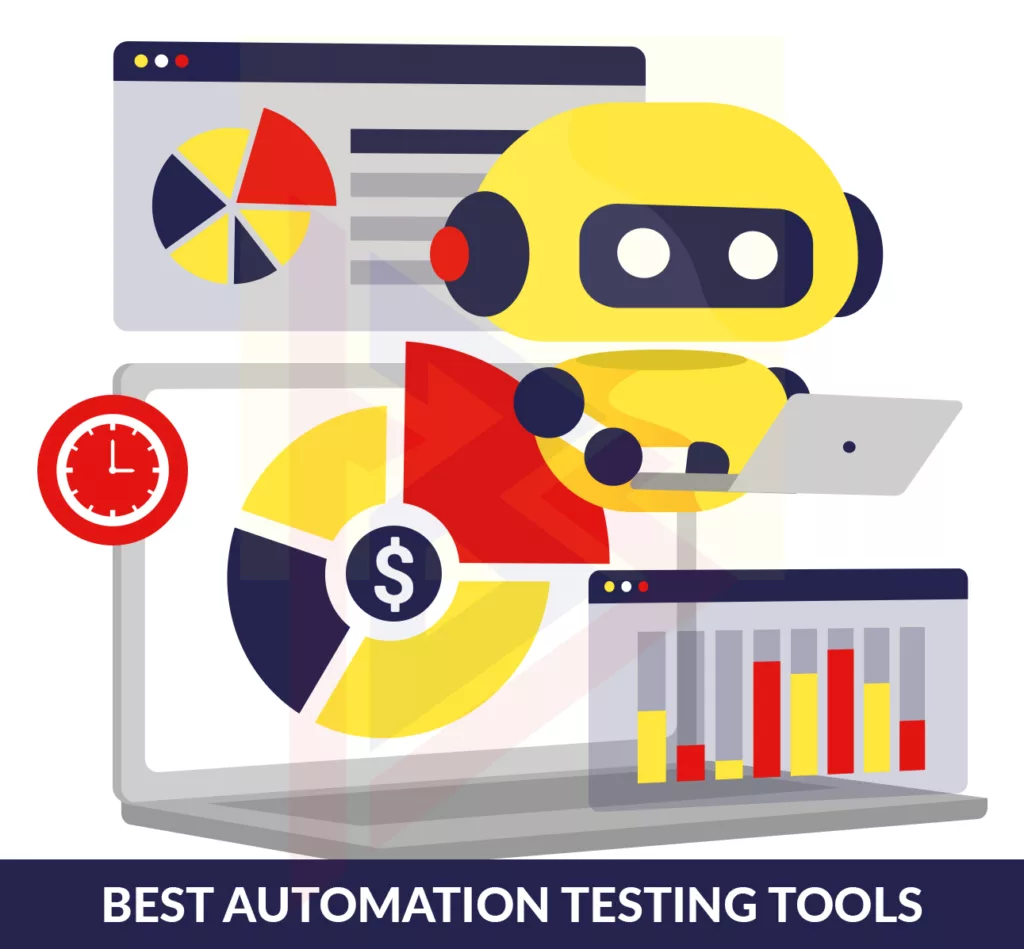
Choosing the right automation tool and when to use it can be difficult because there are more tools than test cases. Among the top 10 automation testing tools, described in the following section, are:
1. Selenium
Various programming languages, OSes, and browsers can be tested with this open-source tool. It is currently ranked #1 in testing web apps.
2. Appium
Mobile app testing for iOS / Android hybrid or native apps.
3. Katalon Studio
A simplified keyword tool for creating test cases for web, API, and mobile app development. Integrates with a wide range of tools including Selenium and Appium.
4. Cucumber
Web development / user experience tool based on behavior driven development (BDD). Gherkin (simple English) is used for writing tests.
5. HPE Unified Functional Testing (UFT)
QuickTest Professional (QTP) was a cross-platform automation tool for functional and regression testing of software applications and environments and offered keyword and scripting interfaces.
6. WorkSoft
The only continuous testing platform that does not require code.
7. IBM Rational Functional Tester (RFT)
Commercial testing tool for automating functional and regression tests, GUI testing, and data-driven testing.
8. Telerik Test Studio
A Windows-based testing tool for functional, load, and performance testing of web and desktop applications.
9. SoapUI
This free tool automates API testing for both Representational State Transfers (REST) and Service-Oriented Architectures (SOAP).
10. TestComplete
The tool includes features such as keyword-driven testing, data-driven testing, regression testing, and distributed testing in addition to test automation. Record and replay functionality is a well-known feature.
Benefits of Automation Testing
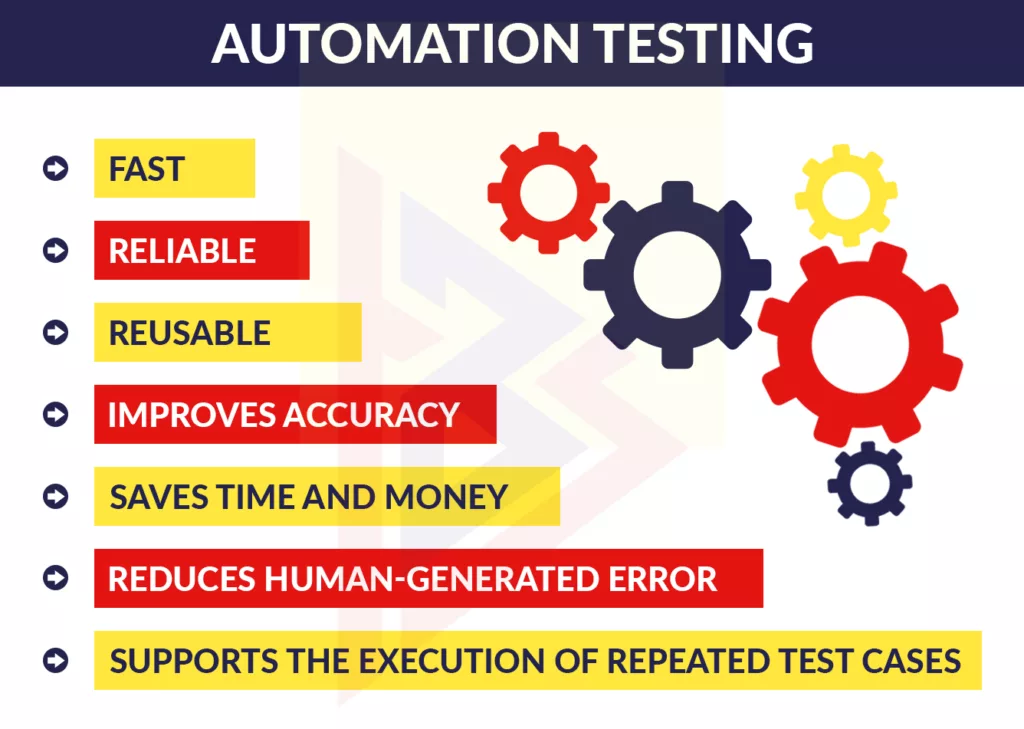
Automated testing provides the following benefits:
- Time-saving
- Reusable
- Effective in terms of cost
- A greater degree of accuracy
- Testing concurrently
- Reporting that is clear
- Disruptions are reduced
- Bug tracking that is clear
- Process of development is sped up
- Enhanced chances of finding bugs
5-Step Automated Testing Process
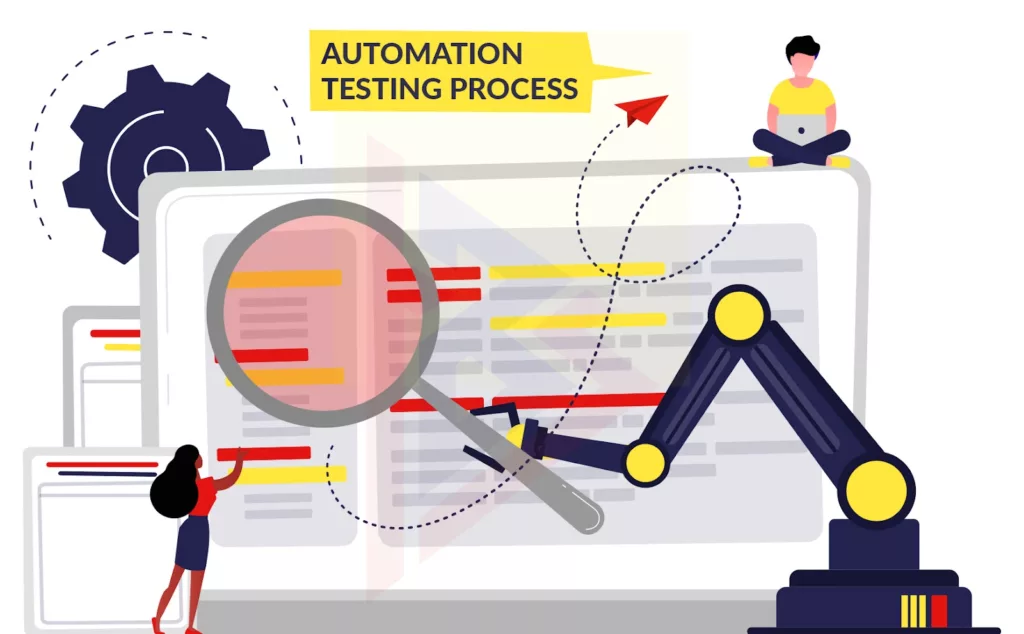
Below is a step-by-step guide to setting up automated testing:
1. Define the Scope of Automation
To determine if a test can be automated, define its requirements. Then define what a test case is supposed to accomplish.
2. Evaluate and Select Tools
For each test, choose the appropriate tool
3. Planning, Design, and Development
The test cases should be designed and developed. Test the effectiveness of automation by starting small. Document and clearly label automated test cases.
4. Test Execution
Make sure it works by running the first test. Set the frequency of the tests (regular or triggered).
5. Maintenance
It is important to review and maintain test cases as the software evolves so that any changes that might affect testing will be incorporated. Automating this test may not be the best option if this occurs frequently.
Steps to Choose an Automation Tool
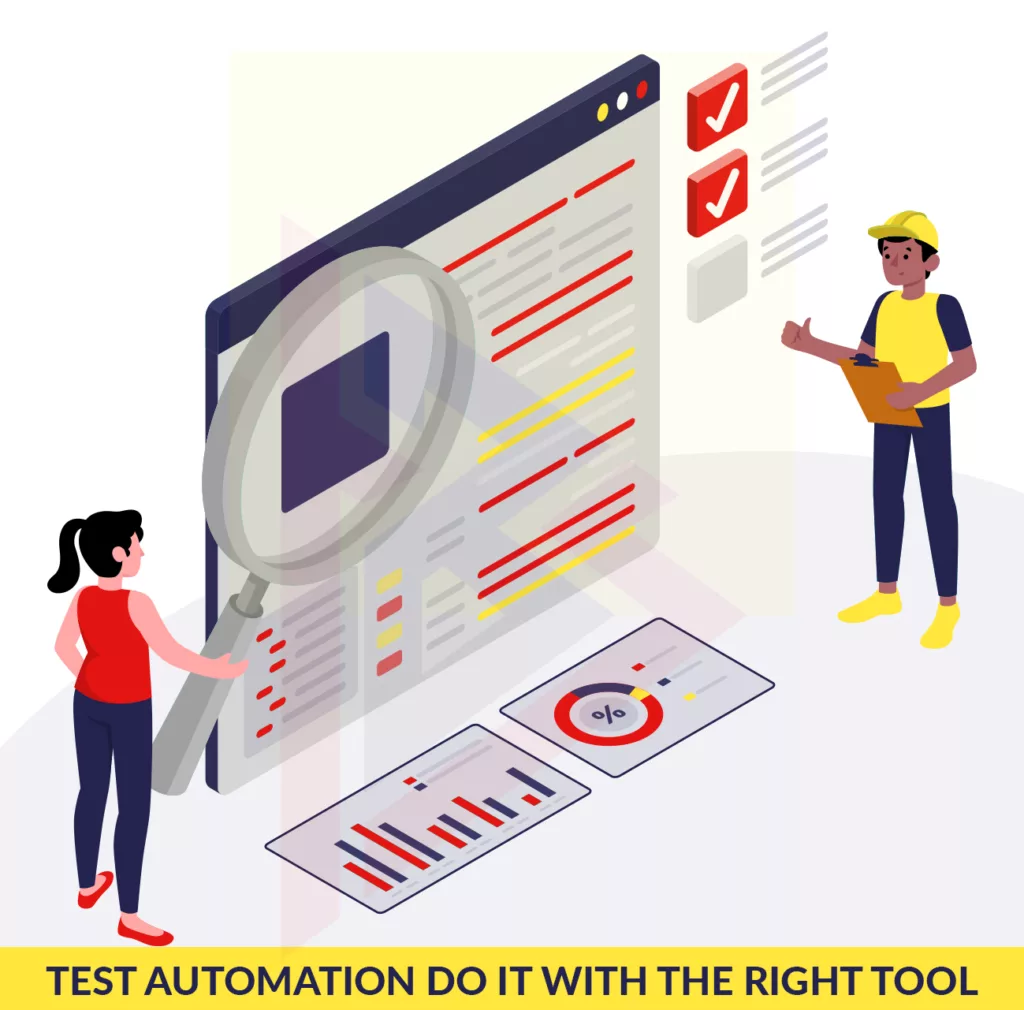
When determining a test automation strategy, QA teams develop a testing plan that specifies how they will approach and accomplish the project’s goals, as well as which tests will be automated. A decision will be made about which automation testing tools to use next.
It is important to select the right automation tool at the right time. Among the factors to consider are:
- Price
- Environment and technology support
- Supports multiple testing frameworks (where applicable)
- Supports testing that needs to be conducted
- Training time / easy to use
- Developing scripts is easy
- Experts in tool development (internal or outsourced)
- Capability to report effectively
- (Technical support or community support)
- The recording is available
- Capabilities related to CI/CD
- Integration with task management or bug tracking systems
When automating tests, it is important to automate the right test cases, but it is also important to follow these best practices in order to maximize the return:
- Tests that are reproducible and necessary only
- Test based on data
- Frequently and early test
- Develop tests that can withstand frequent maintenance (particularly for UI)
- Ensure no new technical challenges will arise during the test
- Test on real devices (if applicable)
- Keep good records (structured well)
- Tests must lead to actions (tasks)
- Testing should be shared
Automated testing has limitations.
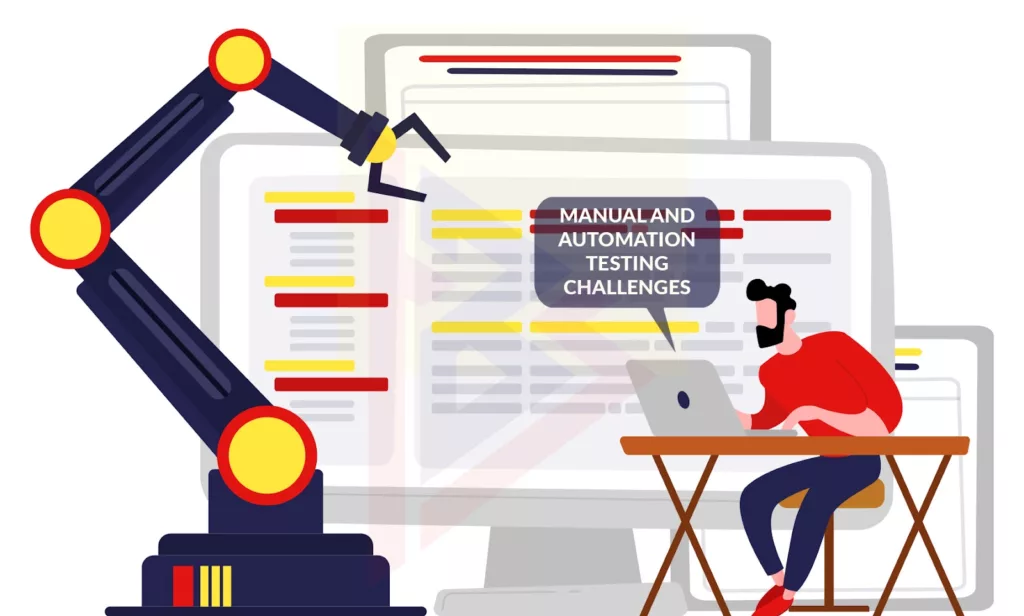
Despite its many benefits, automation is not without its limitations. It is important to note that automation testing is not appropriate for every scenario, and much time can be wasted creating a test for an environment that will change frequently or won’t be used enough to warrant the investment. In addition, automated testing requires data-driven feedback, but not all feedback is quantitative. A qualitative test would not be appropriate for automated testing, such as a test of the user experience.
Automated testing will replace manual testing?
Test automation – even those powered by artificial intelligence – are not capable of replacing manual testing, which is a common concern. Test automation is not suitable for all test cases and projects. A true QA professional, however, can spot complex issues or opportunities for improvement that automation cannot.
Automated testing: 5 myths you need to know
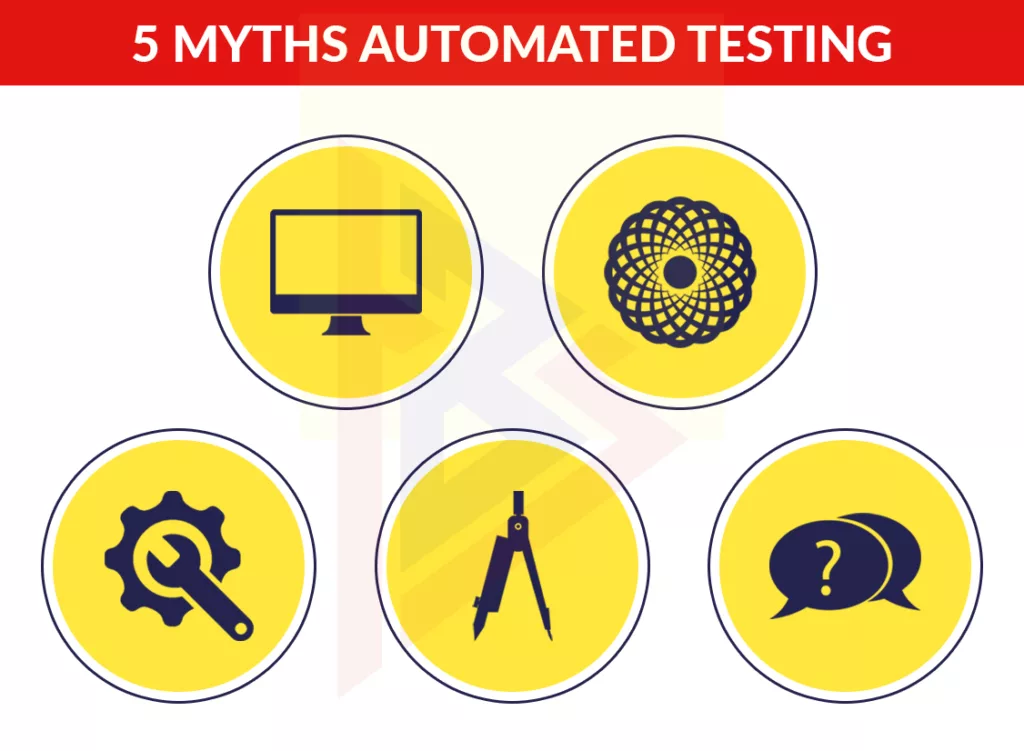
Automated testing is commonly misunderstood for the following reasons:
1. It is possible to automate every test
It is not possible or desirable to automate all tests. Automating a test that is not performed frequently enough or that will not save time should not be automated. The majority of automated tests are run early in the development process for simple, stable, fixed tests or complex and error-prone tests.
2. Automated testing is expensive
Initial setup of test cases for automated testing may be expensive, but reusing those test cases on a long-term basis reduces the overall cost (and time) spent testing. There are many free and open-source tools for automated testing as well.
3. Automation testing is better than manual testing
The right kind of testing depends on the job, and there is no better or worse way to test. The best approach depends on the situation and stage of the development process.
4. Test automation setup is a one time only event
It is ideal that once a test is set up, it will be used repeatedly in its current state. To remain relevant, the test script must be updated if the environment changes.
5. Automated Testing is an easy fix
Automated testing is not a one-step process. You cannot expect to set up an automated test and never have to look at it again. In truth, the source code of your automated tests requires considerable upkeep to ensure that it is performing as intended. In addition, upgrading an organization’s testing and development processes will necessitate new training and onboarding to acquaint stakeholders with automation and authoring complex tests. Although the ROI of test automation will certainly become obvious over time, the change to a predominantly automated process from a predominantly human one will require dedication, patience, and financial investment.
Conclusion
As part of TechnoBrains‘ Agile, DevOps development process, Agile testing is baked right into every project.
The principles and values of agile to expedite the testing process while ensuring collaboration among the testers and developers towards the common goal of quality software development. Rapidly developing software that is also of high quality and secure.
We provide quality assurance testing services at TechnoBrains to help improve existing products or platforms in terms of their performance, security, and compatibility.
